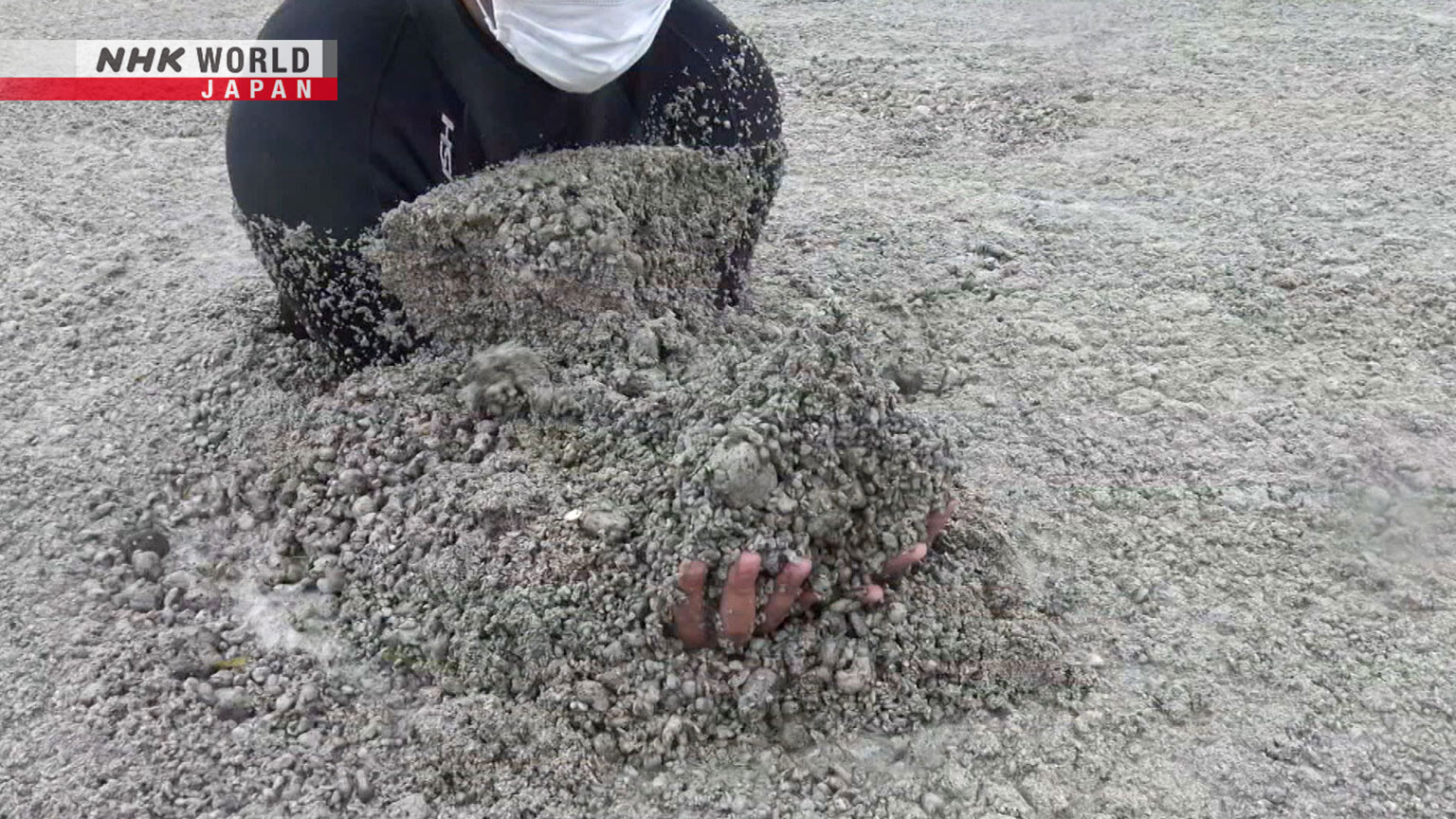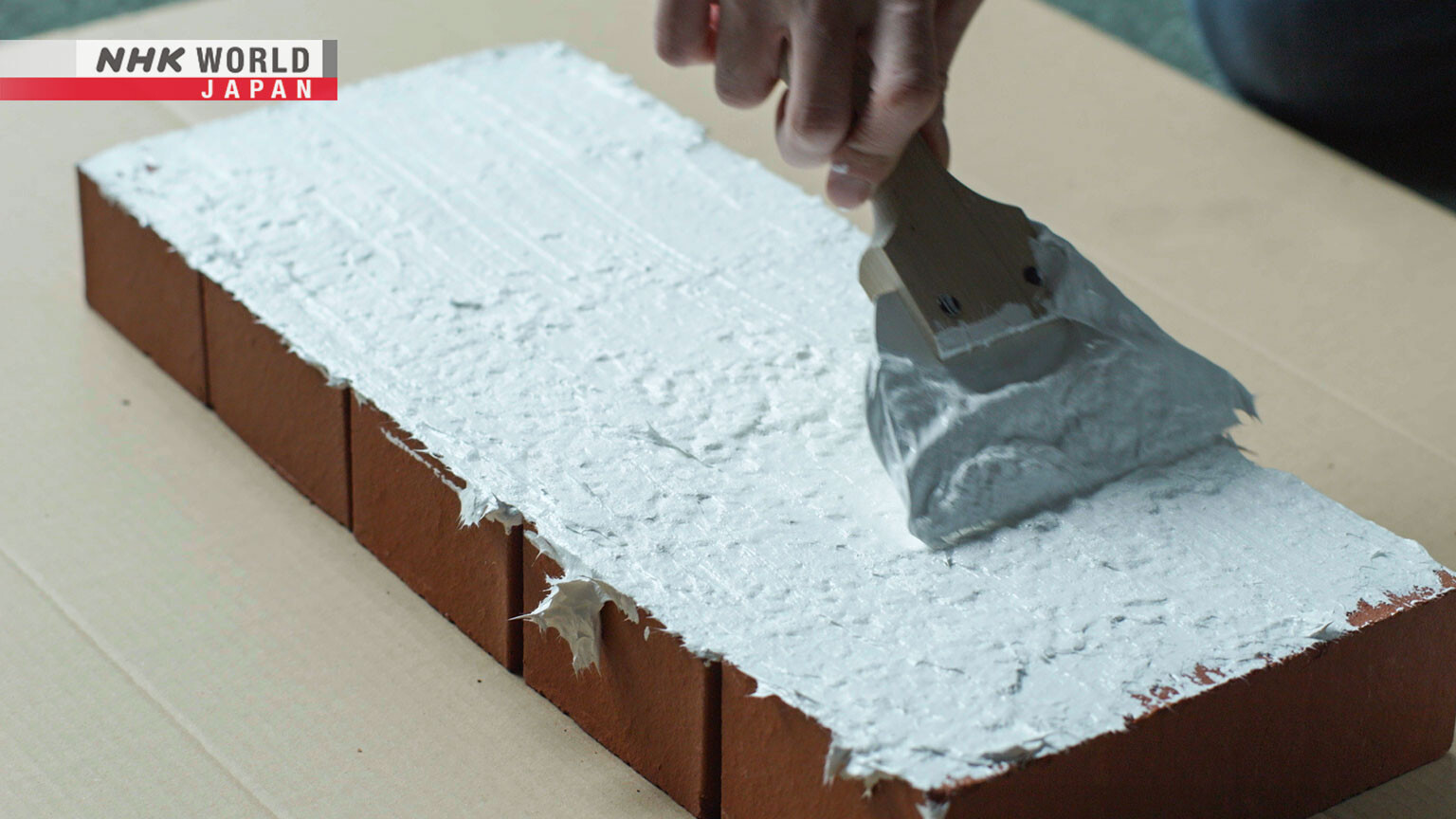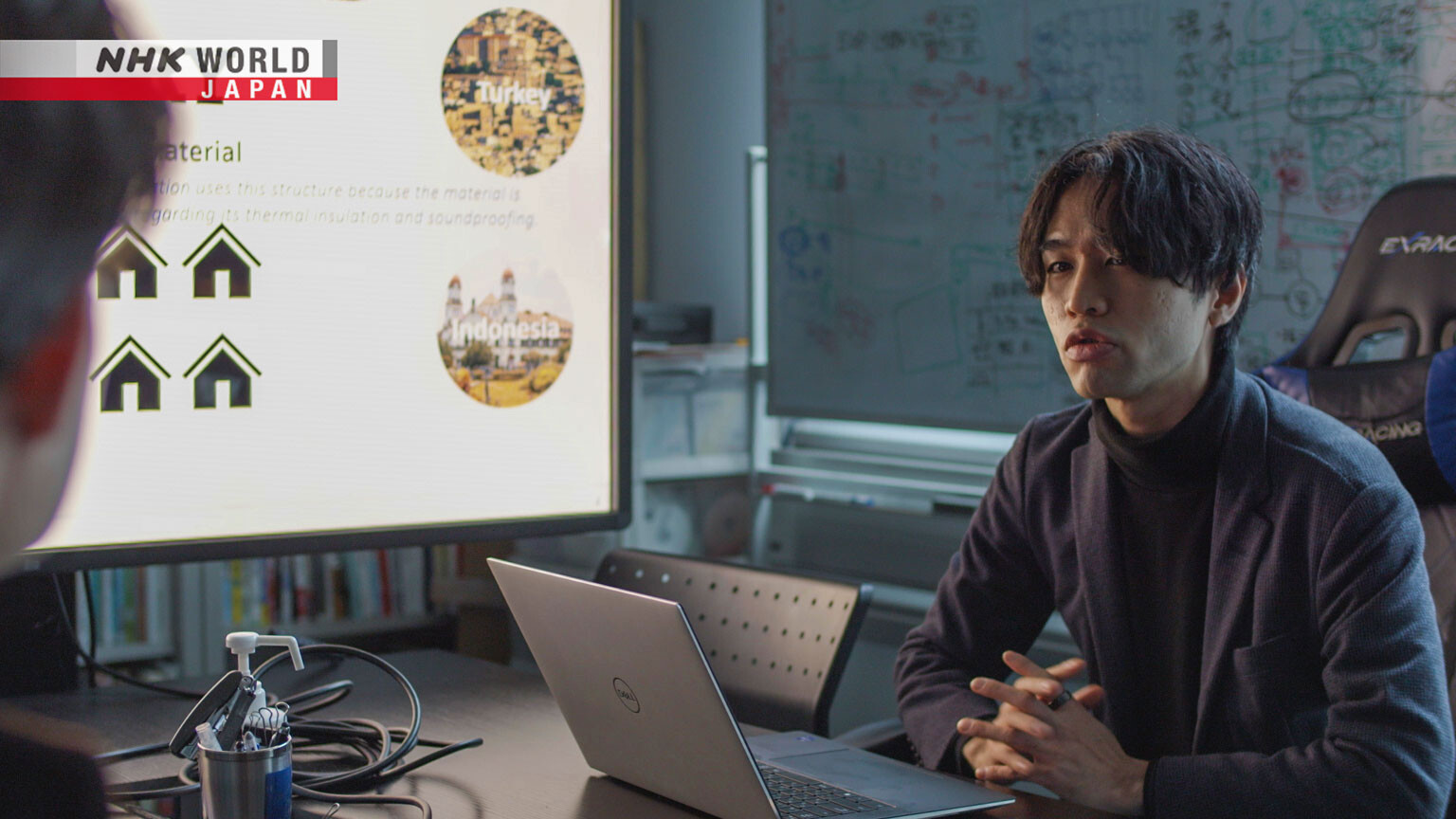When Massive Underwater Volcanos Erupt
In 2021, a massive submarine volcano erupted off Japan. We follow Japanese researchers' efforts to understand the eruption and witness their discovery of obsidian and even new sea creatures.




Transcript
Everything that happens in the world is the result of complex interactions in a complex system,
and it's all part of the larger history of the Earth.
Today, we're going to start with this knobbly-looking piece of rock
and what it can tell us about the phenomena of sea volcanoes.
In October 2021, something extraordinary occurred in the sea of Okinawa!
Large quantities of pumice stone suddenly swamped the coast,
greatly affecting tourism and the fishing industry.
As for what brought about this mass of pumice stone...
it was a major eruption of the submarine volcano, Fukutoku-Okanoba.
A pumice raft had drifted over from the volcano, 1,300 kilometers away from Okinawa.
The eruption was Japan's largest in the last 100 years, with plumes reaching 16 kilometers high.
It was also witnessed by a fishing boat that was in the immediate vicinity.
I turned back and saw that Fukutoku-Okanoba had erupted
and was thrusting up from the sea.
Looking up I thought, "Oh, it's really high."
Lightning was moving vertically and horizontally.
It was volcanic lightning.
A new island was even created by the eruption!
It sank in about four months after being eroded by waves,
but researchers are still trying to figure out how the once-in-a-century eruption occurred.
Wow, I didn't know there was such a thing!
Today, the submarine volcano Fukutoku-Okanoba and the full story of its massive eruption!
The underwater volcano Fukutoku-Okanoba is located 1,300 kilometers south of Tokyo.
It's also 300 kilometers from the nearby inhabited islands of Hahajima and Chichijima.
In fact, this area is home to one of the world's largest series of underwater volcanoes.
The reason why there are so many in a row is...
The Pacific Plate is subducting beneath this area.
The magma that is created here rises, and this is why volcanos are so active.
However, they're difficult to observe,
and the details of submarine volcanic eruptions have been shrouded in mystery.
So in April 2022, a research vessel sailed to Fukutoku-Okanoba in order to collect samples of ejecta
from near the crater and clarify the giant eruption's mechanism.
Dr. Kenichiro TANI lead the research team.
We captured the eruption process, something that is quite rare,
so we can gain a lot of information
by comparing that with the actual ejecta on the ocean floor.
I'm really looking forward to seeing the sediments and discussing them.
Here is the survey equipment.
Called a K-grab, it collects samples from the seafloor.
It has a retractable claw on the bottom.
The idea is to lower the device to the seafloor at a depth of approximately 500 meters
and bring back surface samples from each layer in the ground.
Approximately 20 sites around the crater will be surveyed.
However, something unexpected occurs!
An approaching typhoon shortened the survey from 5 days to just half a day.
So the survey was conducted at the eight most important points.
Let's be safe!
7:30 AM. Finally, the survey begins!
K-grab's away!
Gradually, light from the sun no longer reaches the depth.
And after about 10 minutes...
It has arrived at the bottom of the sea floor.
The entire area is covered with sandy volcanic ejecta.
On board the ship, the team confirms that the K-grab has arrived at the seafloor.
Seabed confirmed. We'll start reeling in.
Believing that the K-grab has properly grabbed a sample, it is slowly reeled in.
After about 10 minutes, it returns to the deck with the waiting researchers.
Ah, a good sample. There's pumice stone.
They succeeded in collecting the first sample near the crater,
which is key to understanding the eruption process.
First, the team preserves the layer sample by inserting this transparent tube.
Extracting the sediments as they are enables them to determine
in what order the pumice and volcanic ash accumulated.
It could be capturing the series of ejecta from this eruption.
Exactly what we're after.
Then comes an unexpected find!
Wow, I didn't anticipate this!
It's obsidian - almost an entire lump of glass.
Obsidian often retains information about the original magma,
so it's very easy to gain clues
about the formation of the magma and the process of eruption.
It's a very valuable sample.
And that's not all!
Despite the volcanic ash, the team also discovered a tiny sea creature!
We got it! It's big.
What did you catch?
Many sea worms.
This is great.
This is a type of sea worm that is found near deep-sea hydrothermal waters.
It's a rare species that has yet to be named.
A total of four species of organisms were found.
Research will also be conducted on how the ecosystem of the seafloor affected by the eruption will recover.
It's often said that we know the surface of the moon
better than we know the ocean floor of our own planet.
And submarine volcanism is a good reminder that there's an active world below the waves,
which has important consequences for those of us living on the land.
To talk more about this, it's my pleasure to welcome today's guest,
Kenichiro TANI who was the leader of the research team we just saw in the video.
Dr. TANI, welcome.
Thank you for inviting me.
What was your impression when you first got the samples?
There have only been a few cases in the world
where ejecta from a freshly erupting undersea volcano have been collected,
so I was extremely excited that we could obtain such samples.
What did you do next after obtaining the samples?
After returning to land,
we took the samples to the lab and had a "sampling party."
It's a sort of treasure-sorting party where the researchers discussed
which parts to take and for what research purposes.
We're now analyzing our samples.
Here we have 2 actual samples that you brought.
First, pick this one up, Simon.
It's called pumice stone.
It was actually floating on the sea surface after the eruption.
If it were a typical stone of that size, it wouldn't be so easy to hold.
It's light, isn't it?
It has a specific gravity of only about 0.3,
so it floats on water.
Now this one we actually found in the ejecta we took from the seafloor.
It's obsidian - a lump of volcanic glass.
Believe it or not, both samples came from the same magma of the eruption,
and the proportions of the elements in them are the same.
Pumice is typically full of holes like this one because magma suddenly drops in pressure,
and some of its components escape as gas when it is ejected all at once
into the shallow ocean or the atmosphere.
However, obsidian may yield clues about the temperature, pressure, and gas composition of the magma
before the eruption because it cools and hardens without losing gas or other components deep underground.
I've been studying various undersea volcanoes around the world,
and obsidian is rarely found on the ocean floor.
But this is a rare and limited example.
Usually, when silicon-rich magma erupts from undersea volcanoes,
it bubbles up and turns into pumice stone,
but for some reason, glass remained in the Fukutoku-Okanoba eruption.
What kind of research can you do with this rare obsidian?
We're in the process of analyzing it, but one interesting thing has come to light.
This glass looks blackish and homogeneous,
but when we mapped the distribution of the elements,
we found that 2 types of magma had mixed and solidified into a glass.
So it looks like only 1 type of magma,
but chemical analysis will reveal the difference in the 2 types.
The composition and temperature were probably a little different,
but we now know that the 2 magmas
mixed together, erupted, cooled, and solidified.
We're excited that magma of different temperatures
may have mixed just before the eruption, which may have triggered the eruption.
The cause of the great eruption is becoming clear from the large amount of pumice
that washed ashore in Okinawa and other areas.
Dr. Kenta YOSHIDA, of the Japan Agency for Marine-Earth Science Technology,
was one of the first to begin analyzing the pumice stone.
Most of the pumice stones are light gray or whitish,
but if you look at a variety of pumice stone,
you can find some like this with black areas mixed in.
Upon closer inspection, the whitish pumice has some black areas mixed in here and there.
From this appearance, Yoshida initially believed that a phenomenon called "magma mixing" triggered the great eruption.
Magma mixing refers to the mixing of a magma pool,
represented in white, with hot magma of different composition, represented in black.
The theory was that this would trigger an explosive eruption.
He figured the difference in color between the two was evidence of that,
and after looking up the components of each...
There was little difference between the components of the whitish and black areas.
It appears that no large-scale magma mixing occurred.
So what exactly caused the great eruption?
Yoshida processed the pumice stone.
He made it thin so that light could penetrate,
and analyzed it thoroughly using a device that examines the bonds between molecules.
This revealed a characteristic substance, contained only in the black part.
This high peak represents magnetite,
an oxide mineral that contains a mixture of divalent and trivalent iron.
And after examining the black areas with an electron microscope... there they were.
A mineral called magnetite is scattered as nano-sized crystals, nanolites.
This was the characteristic of the black part.
The presence of nanolites increases the magma's viscosity.
Essentially, the free-flowing magma becomes more viscous,
and when it erupts, it becomes more explosive.
Here's the scenario that Yoshida imagines.
Magma rises from the bottom of the volcano.
Heat, gas, and water are added to the magma from below,
creating nano-sized crystals in the magma pool.
The viscosity then becomes stronger and energy builds up.
Then, when the limit is exceeded, it erupts all at once.
Yoshida showed a new possibility that triggered the eruption.
What do you think about his research?
I think it's very interesting.
We're keen on knowing what triggered the explosive eruptions.
Based not only from our research on seafloor sediment,
but also from YOSHIDA's and others' study of floating pumice,
there is probably more than one thing that triggers an eruption.
The fact that he was able to find one aspect of those elements
is something we're looking at too.
This is how obsidian and pumice are beginning to reveal the mechanism of eruption.
Simon was also concerned about damage caused by pumice stone.
People who live along the coast
are probably concerned about the impact on their lives.
Well in Okinawa, for example, if pumice stone gets into a fish farm,
the fish might mistake it for food, eat it, and die.
Or pumice stone may bury the coastline and prevent ships from docking.
Many islands rely on thermal power plants,
but the electricity might black out if tankers carrying fuel oil cannot dock.
We've seen firsthand the combined effects of these various factors.
And now we can use a satellite to observe almost in real time how this pumice stone flows.
I hope that the next time something similar happens,
we can share information with the relevant organizations
and help prevent such damage from occurring.
I'm sure you have many new research projects in mind.
We were a bit surprised when we went on a research cruise a year after the eruption,
and there were almost no creatures on the seafloor in the surrounding area.
The ecosystem of the surrounding seafloor may have been reset by the volcanic eruption,
and is probably trying to recover from it.
This process has not been studied very much yet.
I plan to go back there in 2024 to survey the seafloor.
3 years have passed since the eruption,
so I'd like to conduct another survey and monitor how the ecosystem is recovering.
We've been talking about underwater volcanoes, but there are many similar volcanoes on land.
Do the same kinds of problem exist between volcanoes on land and underwater?
Underwater volcanoes haven't been monitored like land volcanoes.
There isn't even enough map data on where underwater volcanoes are located.
When we survey underwater volcanoes,
we first make a map by sending out sound waves from our research vessel.
We're still doing the same things that the first scientists did 100-150 years ago,
when they surveyed the seafloor.
But by mapping the seafloor,
it's possible we'll discover unknown underwater volcanoes.
There are many things we don't understand, and it's a lot of work, but it's an exciting field.
I'm looking forward to that research.
Thank you.
Now we're going to the section of the program where we look at the research of some young scientists
whose results show great promise for being the start of something big.
This time, we're going to look at a new technological advance
which can help mitigate earthquake disaster by reducing the risk of buildings collapsing.
The 2023 Turkey-Syria earthquake.
Many of the collapsed buildings were constructed using masonry,
in which bricks, blocks, and stones are stacked on top of each other.
Approximately 60% of the world's population lives in masonry structures because they are strong and well insulated.
However, they have a major weakness.
They're vulnerable to seismic shaking.
In fact, about 80% of the earthquake victims who have died in the past 100 years
were killed by collapsed masonry buildings.
This Vanguard Researcher is attempting to overcome that weakness with a groundbreaking invention.
Dr. Kenjiro YAMAMOTO, an assistant professor at the University of Tokyo, studies earthquake disaster prevention.
The material he's developed has the consistency of cream cheese.
This is the paint we've developed.
It improves earthquake resistance just by applying it.
According to our experiments,
it can withstand MMI 11 or more for several times.
How can paint increase earthquake resistance just by applying it?
The paint cures two weeks after it's applied, and will not break even if a person stands on the bricks.
Two people even got on top, yet the bricks still did not budge.
Yamamoto and his team experimented by subjecting one-quarter scale buildings to vibrations.
On the left is a model house of low earthquake-resistant masonry construction.
On the right is a similar model coated with the paint.
Each model is subjected to vibrations of about 6 on the MMI scale.
The unpainted house began to crumble.
And after further shaking...
It collapsed easily.
Yet even after the painted model experienced vibrations of about MMI 9,
not a single crack appeared!
Why didn't the painted building collapse?
The secret lies in the materials inside.
This paint is primarily made of 2 materials.
One is this glass fiber.
The other is this acrylic silicon resin.
The glass fiber mainly serves to increase the wall strength.
This acrylic silicone resin works by
increasing the wall's elasticity as it responds to the earthquake.
Strength and elasticity.
What does he mean?
Typically, when masonry walls collapse due to vibrations from an earthquake,
the stacked blocks start to separate from each other on the outer side first.
That is why the special paint is applied to both sides of a wall.
Then, even if cracks appear, the wall is strengthened by the countless glass fibers in the paint,
and the blocks will not slip out.
The acrylic silicone resin plays a different role in the event of major shaking.
The resin is elastic, so it moves along with the shaking, releasing energy and preventing collapse.
The two functions overlap perfectly,
making it possible to prevent collapse even in the event of a massive earthquake causing swaying.
To reduce the number of earthquake victims,
Yamamoto and his colleagues are now working on the practical application of this paint in the Philippines,
an earthquake-prone country.
The first place he turned was a public elementary school.
Recent earthquakes have caused considerable damage to schools
that are supposed to be properly designed.
40,000 school classrooms haven't been earthquake-proofed,
which is a very serious problem.
I'm wondering if there is anything we can do to improve this situation
where children's lives are at stake and there has been earthquake damage.
Blocks used in those schools were transported from the Philippines to Japan for a demonstration experiment.
In this experiment, the vibration intensity is gradually increased.
The walls coated with Yamamoto's paint didn't collapse,
even after being subjected to a seismic intensity of up to more than MMI 11.
Government officials in the Philippines saw this and decided to adopt it in a school.
It was successfully earthquake-proofed for one-fifteenth the cost of rebuilding.
Yamamoto is now aiming to establish production plants overseas
in hopes that his paint will be used in many developing countries.
It's not realistic to expect that people will pay for countermeasures
against earthquakes that may or may not come anytime soon.
That's why I'd like to realize a world
where paints like this are used in daily life to make buildings earthquake-proof naturally.
Earthquakes are more common in some countries than in others,
but they are also an inevitable part of the way the earth works.
And we have to learn to live with them.
With innovations such as these,
we can minimize the risk to lives and also to the livelihoods of people
who suffer from the effects of earthquakes around the world.
I hope you enjoyed hearing about the science we examined today
and that you will join us in the next installment
in our search for new discoveries and ideas.